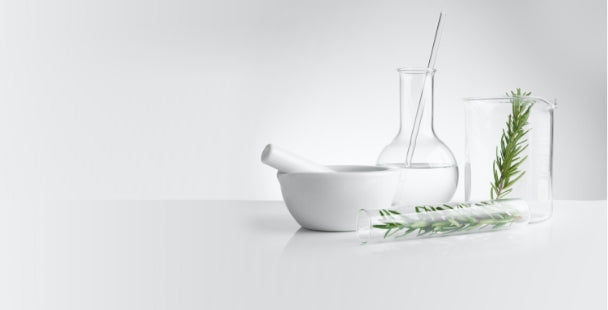
We are more conscious than ever regarding ingredients we apply to our skin, and you may choose to avoid ones that are controversial or may cause an allergic reaction. As a result, you need to know how to read and understand a product ingredient list (INCI). However, this can be tricky when faced with a list of uber-long words that sound like they are from a foreign language!
According to FDA and Health Canada, ingredients must appear with their INCI name. INCI stands for “International Nomenclature of Cosmetic Ingredients” and is a naming system for ingredients based on scientific nomenclature. This system was first developed in the 1970s and has since been adopted for use in the European Union, Japan, and many other countries. With few exceptions, INCI labeling names are the same in every country. Plant ingredients are easy to spot because they are listed with their Latin names (always two words) and a common name in brackets, e.g. Rosmarinus officinalis (Rosemary) oil, which is rosemary essential oil.
Some ingredients on the list sound very ‘chemical-like’ and many people believe that ‘if you can’t pronounce the ingredient name, it must be bad for you’. This isn’t always true. There are plenty of common or naturally derived ingredients that have complicated names but are safe to use and have an important function in the product. One example is Cetyl Alcohol – fatty alcohol derived from Palm Oil and used as emollient and a thickener in cosmetic products.
The order the ingredients are listed on the label is important. Ingredients are listed in descending order from greatest amount to least amount present in the product (except ingredients present at a concentration of less than 1%; those can be listed in any order).
If product contains water or water-soluble ingredients, you will find preservative towards the end of the list.
At the end of the ingredients list you will find allergens listed if they are present in the product. These allergens are constituents of natural essential oils or synthetic fragrances.
Please note, that from the position of a specific ingredient in the list you cannot conclude about the potency of a product. Most often, active ingredients are incorporated in the product at low concentration, as they are very effective at this concentration. While at high concentration they can cause irritation.
It may take some time to learn how to decipher INCI lists but once you’ve got the hang of it, you’ll be able to spot key ingredients at a glance. It really is the only way to make sure that a formula does not have ingredients you wish to avoid or, alternatively, to ensure that a specific ingredient is present in your product.
